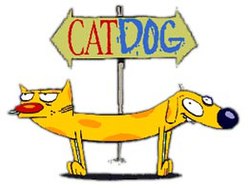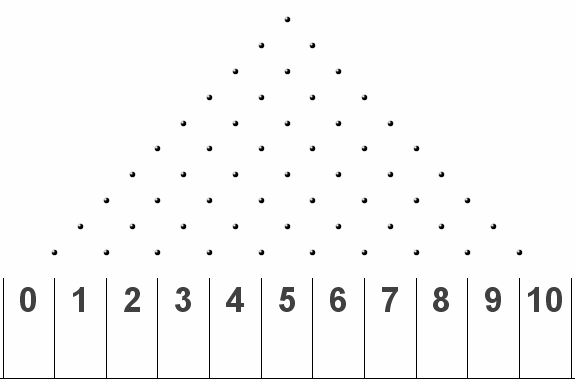
Maths All Around
Membership
Contents:
-
1. What is membership? Why is it a hot topic?
-
2. Memberships in a bigger world: helpful pictures of membership
-
3. Membership and maths
1. What is "membership"?
And why is it a
hot topic?

-
What does MEMBERSHIP mean?
What are some
examples
of membership?
And ... What are examples of things that something else can be a member of?
Collections? Groups? Classes? Parties? Lists? Sets? Clubs? Gamuts? Teams?
-
We talk about `membership' and `belonging' in life.
Membership of the club or the gang or the team.
Being a passport holder.
Belonging (or not) to the group.
Classes of things, to which certain things belong.
Sameness and difference within a group. A notion of "shared ownership".
- If a US president says: ``America first.'' - what does it mean?
-
Maths, of course, has its own versions of membership:
If a number is an odd number then it is not an even number.
If an animal is a dog then it is not a cat.

Exercise: what does this mean? Discuss!
-
And the dictionary says something is a member of a class if...?
Sort yourself (if you can) into a group according to the following sequence of
criteria:
Female/Male;
Young/Old;
Religious/not;
Football fan/not;
Music fan/not;
...
Discuss!
- So, when we have a collection into a whole of definite,
well-distinguished objects, of our perception, or of our thought,
then the objects are MEMBERS of the collection.
This is essentially the `definition' due to
G. Cantor.
- Pushing the envelope.
- Universes.
2. Helpful pictures of membership
- In our example above, you might have been a member of more than
one class/group/collection.
(For example Dr Sturman is a member of the class of humans and a member
of the class of living things.
What about Napoleon? What about Ginger the cat? What about your lunch?)
How might we represent this `abstractly'?

- Exercise: Can you draw a picture representing 2,3,4,... possibly
overlapping groups?
Discuss!
3. Membership and Maths
- What does membership have to do with maths?
Perhaps surprisingly, membership is widely considered to be the _main_
idea in the foundation of maths.
Exercise: Discuss.

- Are we all happy with this idea of a collection? Examples:
The collection of Prof Martin's friends.
The collection or `set' of living dinosaurs. (How big is this set?...)
The set that we can list like this:
{A,B,C,D,...,Z}
{1,2,3,4,5,...,26}
{1,2,3,4,5,...}
{a,b,c,d,...,z} (?)
The set of atoms in your fingernail.
The set of atoms on Earth.
The set of atoms in the universe.
- The size of a set.
We say a set is `finite' if we can count all the elements in a finite
(possibly very long) time.
Examples: The set of Prof Martin's friends.
(This is honestly not an empty set. But let's give a name to the
empty set anyway. Let's call it `O'.)
The set {1,2,3}. The set {A,B,C}.
The set of all words in the Chambers dictionary that can be spelled out
using just the letters {A,B,C}.
What about the set of all sequences of letters taken from {A,B,C}?
(Exercise: What is the biggest finite set you can think of?)
Exercise: What are two different finite sets of the same size?
The set of all sets of the same size. Is this a set?! (See later.)
- One collection or `set' can have elements in common with another.
One set can be contained in another.
The set of positive even numbers is a `subset' of the set of positive whole numbers.
Suppose we start with the set of positive whole numbers (call it `N'), and throw out
all the even ones, what is left?
- Can you do this? How big was the starting set?
How big is the final set?
How amazing are you?
- Suppose we start with N and throw out all the multiples of 2 except for 2;
then throw out all the (remaining) multiples of 3 except 3 (are there any?);
then all the multiples of 4 except 4
(except that 4 is already gone! but no worries);
then all the multiples of 5; and so on,...
What kind of set do we have left?
It is an interesting set. Let's call it `P'. It is not empty.

But if I give you a random large number ending in digit 3,
it is famously hard to tell if this number is in P or not.
E.g. 1689394253713
This is the basis of most banking and national security encryption!!
- Remember O={}, the empty set? Could we have a set of sets?
A set of subsets of the set {A,B,C,...,Z} for example.
This set looks like this: {{},{A},{B},...,{Z},{A,B},{A,C},...,{A,B,C},...}
(Discuss.)
How big is this set?
How about: {{},{{}},{{{}}},...}?
Are you starting to see why maths loves membership so much?
- There are _lots_ of sets of different kinds of `numbers' that mathematicians find interesting
(natural numbers, integers, rational numbers, real numbers, algebraic numbers, transcendental numbers, complex numbers,...).
But maybe we'll leave those for another day. (If you just wanted
to do maths you'd have not come to this place!)
4. When membership goes pearshaped
- The set of all sets of size 1. Is this really a set?
Here are some elements of this `set':
The set of people you know for sure exist,
{1}, {2}, {3}, {A}, {B},
{{1}},
...No wait. What happened there?
(Discuss.)
{{{1}}},
For each set, the set containing just this set as an element.
[Cue Twilight Zone theme tune....]
The set of people who understood that cultural reference.
5. Homeworks
- How could you describe the Mona Lisa as a set?
Would you lose anything that way?
- How could you describe the Ode to Joy in Beethoven's 9th symphony
as a set?
And another way?
Would you lose anything, in either approach?
- Find out about different kinds of sets of colours. Or musical notes.




(back)
Paul Martin (base=amsta)
Last Modified: JAN 2016







